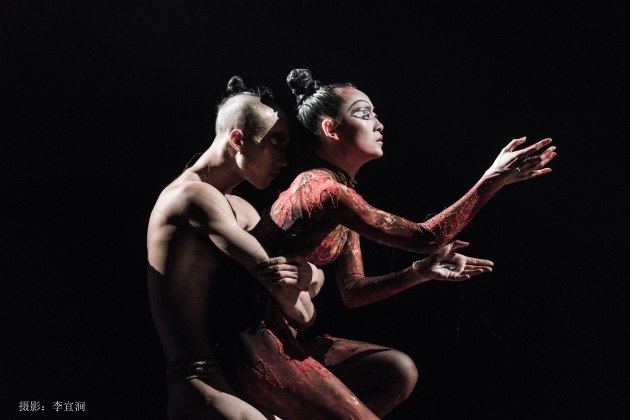Melbourne Festival

Peacock Contemporary Dance Company
State Theatre, Arts Centre, Melbourne
October 4
The Melbourne Festival is in full swing - and it’s the last one to be staged in spring. Next year we head into a winter festival. This time there are some substantial dance offerings with quite a few recent local works being restaged. These include the wonderful duet Split choreographed by Lucy Guerin which has toured extensively since its launch in 2017 and Stephanie Lake’s Colossus that underwent developments last year in conjunction with Transit Dance and was also staged as part of the Arts Centre’s ‘Take Over’ development grant at the 2018 Fringe Festival. There is also Jo Lloyd’s Overture and Branch Nebula’s High Performance Packing Tape - a lovely one man display of ingenuity and intrepid silliness, channelling very understated clown/circus (think high-wire meets Officeworks!).
To turn to a bigger production - visiting Chinese troupe, Peacock Contemporary Dance Company led by choreographer Yang Liping and their version of Stravinsky’s Rite of Spring warrants attention. This is one of the big festival draw-cards for dance and deservedly so. It is a reimagining of the Rite with an Asian sensibility. Imbued with cultural symbolism and a narrative trail of sorts linked to eastern philosophies and Buddhist motifs, it is a powerful remaking of the story of ritual sacrifice, cyclical renewal through purging and making peace with the gods. It is not quite the pagan brutality of Stravinsky’s Rite but it is still quite strident in its attack and violent imagery. It is also extraordinarily beautiful and brilliantly interpreted by the company.
One truly audacious (and no doubt controversial) aspect of this production is the way in which Stravinsky’s score is encased within a wider shell of original music by Xuntian He. The story-telling does not forget Stravinsky entirely but is a fresh and highly developed series of episodes that loosely connect to six Tibetan Buddhist mantras.
A sense of ritual is in place from the start as we enter to see a monk perform slow task-based movements around the stage. He is tasked with the collection of large Chinese characters that represent Buddhist chants - they are heaped in a mountain and carefully ordered on the stage. These become increasingly significant to the work as tangible objects as well as ideas. A group of female deities sit amidst the clouds, looking down on his mortal efforts. They wear gloriously jewelled head-dresses and shimmeringly costumes in rich colours and fabrics. A very patient pace is established for the work.
The choreography for the cast of female dancers works strongly to create a sense of an organic whole where the parts are almost indivisible. The female ensemble of deities and maidens often act as one, making subtle individualised movements. The dance starts very slowly but moves through phases of frenzy and alarm. It is sometimes mechanical and sometimes a slow fluid emerging and is mesmerising in every movement.
Apart from the devoted Lama who toils from one end of the performance until after the curtain calls, two male dancers appear. Together they form a symbolic lion - a huge, imposing head with fangs and fur that reaches the ground. It dominates the sacrificial maiden leaving her rigid and contorted. From within the giant lion a lion-priest emerges, human and voracious. He represents fallibility and lust and is indeed threatening as is a skeleton devil that represents the evils and sins of mortals.
The female chorus enact the coming of spring - green luminescent talons flick en-masse to create a striking image. Creatures are reborn into the world and the elements are stirred into life from their winter dormancy. It is only after this substantial part of the work that the gongs, bells and vocal effects of He’s score subside and Stravinsky’s begins. This is at least half and hour into the work - a confident (if not hubristic) move in terms of a production based on Stravinsky’s Rite of Spring. The section danced to the Stravinsky score explicitly references sacrifice but imagines it as a spiritual enlightenment.
I enjoyed Yang Liping’s Rite of Spring for its contradiction of refined beauty and super-stylised emotion with the raw passion that was also able to be unleashed. This is great festival fare because it is accessible, powerful and intriguing while also challenging expectations. However, I greedily longed for a live orchestra playing Stravinsky’s wonderful score.
- SUSAN BENDALL


